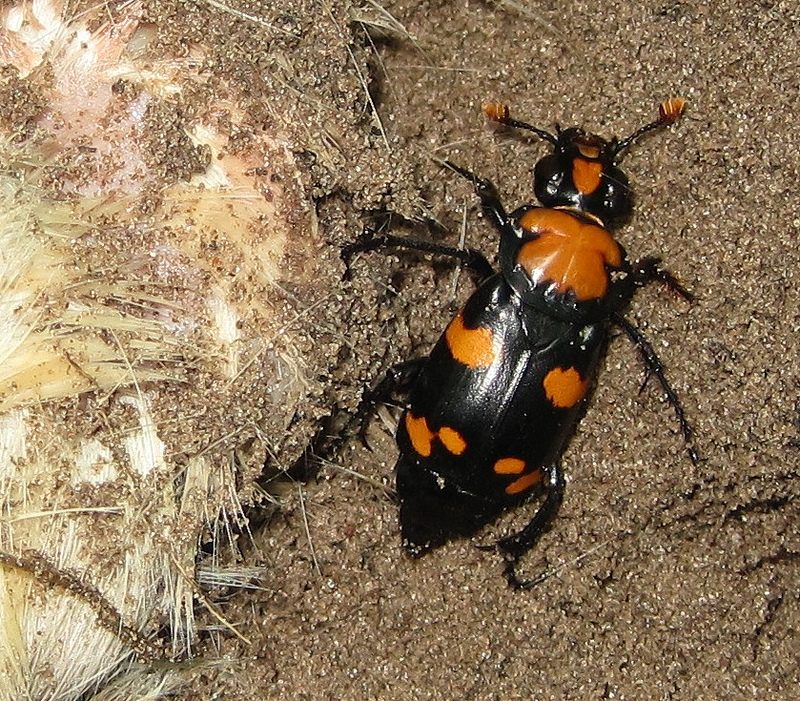
Salt Creek Tiger Beetle Facts
- Though undeniably lengthy, the term of Salt Creek Tiger Beetle represents the common name for a remarkable invertebrate. Despite its length, that term actually remains more easily pronounced than that of the scientific name of the species.
- That’s because it bears the official name of the Cicindela nevadica lincolniana. By either of these tongue-twisting names, however, it has a singularly impressive story. Sadly, though, researchers still know very little about most of its life cycle.
- First identified as a separate species in the early 20th century, no real study of it occurred until the mid-1980’s. At that time, though, a local university undertook the task of making the first detailed study and survey of the creature and its population.
- Currently, its known population remains unknown, but totaled only 365 individuals in 2013. Despite this, the IUCN does not currently have a listing for the remarkable insect. It is, however, listed as Endangered by the country in which it appears.
- Given such scant numbers, the impressive Salt Creek Tiger Beetle must be considered to be facing many severe risks to is existence. Habitat loss remains a serious danger, of course. Its greatest, though, most likely consists of the effects of climate change.
Related Articles




Salt Creek Tiger Beetle Physical Description
While the awesome Salt Creek Tiger Beetle remains a highly remarkable species, it doesn’t hold that status due to its sheer physical size. In point of fact, this scientifically fascinating arthropod actually ranks as only a small-to-moderate sized form of beetle.
It does, though, like many of its kind, display a slight degree of the physiological characteristic of sexual dimorphism. In the case of this specific invertebrate, though, this trait manifests itself in terms of something other than size of coloring.
Males possess a thin covering of fine white hairs on the body and legs. Their female counterparts, however, completely lack this feature. In all other respects the genders appear virtually indistinguishable, with an appearance quite different from most related species.
Precise coloring of the Salt Creek Tiger Beetle varies between individuals. This mainly consists of shades of metallic brown to a dark olive green on the upper side. On the bottom, though, the creature generally displays a dark metallic green shade, but variations exist.
- Kingdom: Animalia
- Phylum: Arthropoda
- Class: Insecta
- Order: Coleoptera
- Family: Carabidae
- Genus: Cicindela
- Species: C. nevadica

Salt Creek Tiger Beetle Distribution, Habitat, and Ecology
Quite sadly, the amazing Salt Creek Tiger Beetle presently has an incredibly limited zone of habitation. In point of fact, all known specimens of this amazing insect appear in a tiny, and very specific, portion of the country of the United States, in North America.
More precisely, the entirety of its known range only includes one area in the northern third of a single county, in Nebraska. Despite intensive study in recent years, it remains unknown if its natural range ever extended much beyond parts of a neighboring county, if at all.
But even within this already incredibly limited area of habitation, it only appears in a few isolated locations. These consists solely of the banks of Salt Creek, and its associated streams and wetlands. This understandably serves as the source of the common name for it.
Among the limited data available on the aptly-named Salt Creek Tiger Beetle is information regarding its feeding habits. Regardless of its small size, the impressive insect represents a powerful carnivore, at least among insects within its own size range.
Given that, it tends to remain near its burrow, waiting to pounce on unsuspecting prey as it passes by. It seems to feed indiscriminately on any insect of sufficiently small size that comes within reach of the relatively powerful mandibles Nature provided it.
Individuals further appear to spend most of its roughly 2-year lifespan underground. It comes out for only around 6 weeks, from June to July each year. During this time it mates, and the female lays here eggs along sloping banks, in the salty mud of the region.
Species Sharing Its Range



Check out our other articles on 6 Wondrous Woody Shrubs of Asia, Vietnamese Mossy Frog, Madeira, Green Sawfish, Eurasian Red Squirrel, Purple Pitcher Plant, Satanic Leaf-Tailed Gecko









Leave a Reply